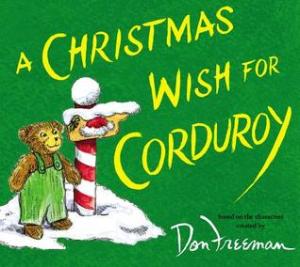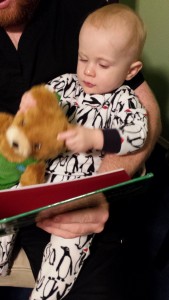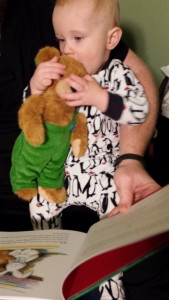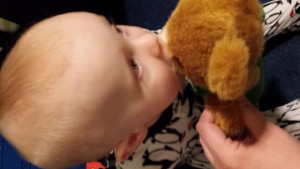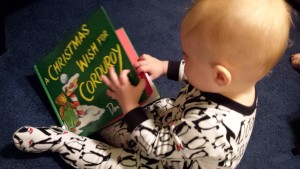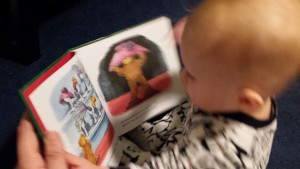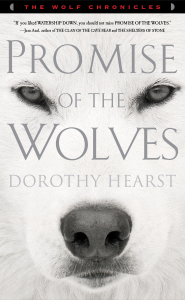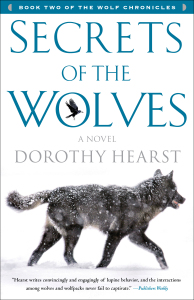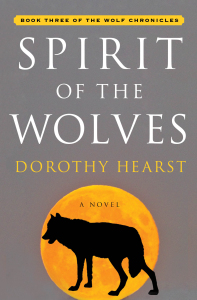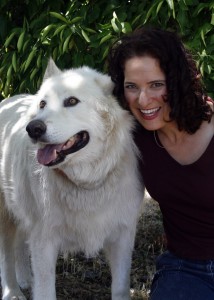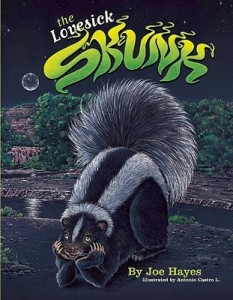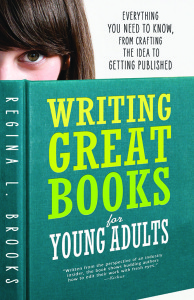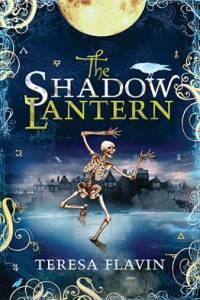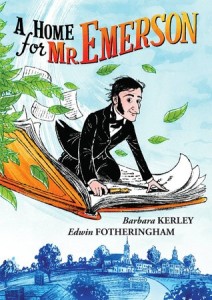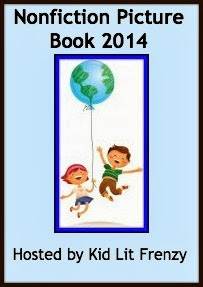
Nonfiction Picture Book Wednesday and BE A CHANGEMAKER Blog Tour!
Nonfiction Picture Book Wednesday is hosted by Kid Lit Frenzy and was started to help promote the reading of nonfiction texts. Most Wednesdays, we will be participating and will review a nonfiction text (though it may not always be a picture book).
Be sure to visit Kid Lit Frenzy and see what other nonfiction books are shared this week!
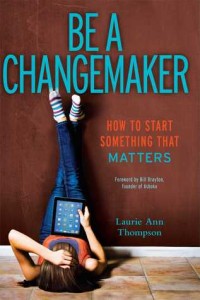
Be a Changemaker: How to Start Something That Matters
Author: Laurie Ann Thompson
Expected Publication: September 16, 2014 by Simon Pulse/Beyond Words
Goodreads Summary: We’ve had the civil rights movement and the women’s movement—now it’s time for the youth movement.
When Divine Bradley was seventeen, he just wanted a safe place to hang out away from gangs and violence, and Team Revolution was born. At age eleven, Jessica Markowitz learned that girls in Rwanda are often not allowed to attend school, and Richard’s Rwanda took shape. During his sophomore year of high school, Zach Steinfeld put his love of baking to good use and started the Baking for Breast Cancer Club.
Gone are the days when kids were supposed to be “seen and not heard.” Today, youth everywhere are rising up, building new organizations, and creating the changes they want to see in their communities and around the world. Be a Changemaker gives readers the tools and confidence they need to affect real change. Readers will learn how to:
– Research ideas
– Build a strong and passionate team
– Create a business plan
– Enlist a savvy adult
– Plan events
– Work with the media
– And more!
Plus, profiles of youth-led social organizations show readers that it’s never too early to become a changemaker.
Ricki’s Review: My favorite aspect of this book is the way it is organized. The chapters and headings are very clear, and it moves in a fluent, understandable manner. Thompson provides very informative, necessary lessons about honing and fine-tuning leadership skills. Some of the sections I liked most were the tips about leading meetings (from standard operating procedures to icebreaker activities), the sample business plan with budgetary advice, the ways to make money (with grants and marketing tips), and the speaking skills (particularly the section about elevator pitches). Across the country, more and more states are requiring the development of advisory groups for high school students to learn life skills. This text would be perfect for this setting. I can also see the text working well in a business or entrepreneurship class. The best part about the way this book is set up is the fact that teachers can assign chapters to groups or teach the portions of the text that matter most to their syllabi or curricula.
Kellee’s Review: I was blown away by how much this book impacted me as I read it. I want to do something right now, so I know that this book will impact young readers. Like Ricki, I was fond of how it was organized. It is ultimately a step-by-step book for leadership, planning, and making a difference in the world.
What I liked the most about the book, though, was the “Profile” sections where actual groups started by kids were highlighted. This really connected it to real life and showed the reader that being a changemaker is definitely something that anyone can do.
Teachers’ Tools for Navigation: We recommend using this book for jigsaw discussions. This would maximize instruction and allow students to access all parts of the text. If you are unfamiliar with jigsawing, learn how to use this discussion technique here: http://www.jigsaw.org/steps.htm.
Throughout the book, there are steps to brainstorming, reflecting, and journaling in a “venture journal” to help plan the steps to becoming a changemaker. The activities Thompson lay out would be a really deep activity to do in a classroom.
Discussion Questions: What is a problem that you see in our society? In your life? What steps could you take to help solve or alleviate this problem?; Which of the highlighted organizations started by fellow kids did you find the most intriguing? How could you help this organization?
We Flagged: “How many times have you complained about something but done nothing to fix it? Or noticed something and thought, Someone should do something about that? We all have those thoughts sometimes. And it’s okay, because none of us can solve every problem we encounter. But guess what…you’re someone. And when you set your mind to it, you absolutely can do something that matters.” (p.1)
Read This If You Loved: The 7 Habits of Highly Effective Teens by Sean Covey; Don’t Sweat the Small Stuff for Teens by Richard Carlson
Author’s Guest Post:
Recommended For:
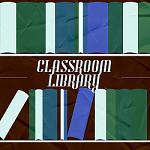
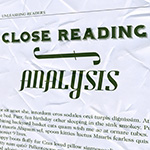

Guest Post by Laurie Ann Thompson
10 Ways Young People Can Make a Difference
There are many ways for people of all ages to make a difference in their communities and around the world. Here are some ideas that can be adapted to a variety of different age groups and interests.
- Collect money. Gather funds to support a cause by placing collection cans in stores, having a penny drive at school, participating in a fundraising walk, etc. Kids (or their parents) can also create a page on a crowdfunding website like com. Either way, friends and family can be great sources of support.
- Collect goods. Organize ways for people to donate goods like food drives, donation bins in retail outlets, school supply collections, etc. Most nonprofits maintain a wish list of needed items. Or, kids can go the other direction by finding a cause that can use their excess goods. Last Halloween, for example, a student at my children’s school had the kids bring in their extra candy, which he then sent to U.S. troops stationed overseas.
- Donate gifts. Ask for donations to be made to a favorite charity in lieu of presents. Kids can quickly and easily collect a significant amount of money or goods, while also spreading awareness for the chosen cause. It’s a win-win!
- Make something. Many young people enjoy making things they can then donate or sell. Can they knit? Hats or scarves for the homeless are much appreciated. Do they make jewelry? Maybe they could sell it at a farmer’s market or on com to raise money. Almost anyone can make no-sew fringe-tie fleece blankets, which are great for animal shelters and child services organizations. And don’t forget the tried-and-true lemonade stand—or a new twist on the same idea!
- Form a club. If there’s something one kid is passionate about, chances are others will be, too. A club can help someone find other like-minded individuals as well as recruit others to the cause. Many of the most successful organizations I profiled in Be a Changemaker started when one kid joined with a few classmates to form a simple club at school.
- Start a petition, or sign one. These can be done on paper and delivered in physical form, or they can be rolled out online via websites like org or whitehouse.gov. For inspiration, check out how a high-school student got Gatorade to remove flame retardants from its sports drinks, or how grade-school kids are trying to get Dunkin’ Donuts to stop using Styrofoam cups. Kids can also check out existing petitions and sign the ones they support (or ask their parents to).
- Write letters. Even young kids can make their opinions known by writing letters to their government officials, local newspapers, magazines they read, companies whose products they use, etc. Against how chickens are treated in factory farms? Write to KFC and McDonald’s and let them know! Kids can multiply their impact by recruiting others to write letters, too.
- Get involved. Many governments and companies have a youth advisory board to help them understand the issues affecting their teen constituents or consumers. Most schools have a student council and/or appoint student representatives to the school board. Youth may not always get voting rights, but at least they’ll have a chance to voice their opinions about the issues that affect them. The adults in charge might not otherwise know the full impacts of their decisions.
- Check with local organizations and/or the nearest United Way to find appropriate organized opportunities to volunteer, or make your own. You may have to get creative, but the potential is boundless. Anyone can pick up trash at their local park or beach, many retirement homes welcome young performers, some animal shelters will allow the public to come in and socialize the animals, or perhaps an elderly neighbor would probably appreciate help with the yard work. Everyone has skills: they just need to find a place to put them to good use.
- Read! Obviously, reading can provide kids with facts and practical knowledge. But studies have also shown that reading builds empathy, an essential element for making a positive difference. Whatever kids (or adults!) choose to read, they’re sure to be expanding their world views, analyzing new ideas, and growing as human beings. So, when they’re not out there changing the world, make sure they have time to enjoy a good book.
Be a Changemaker: How to Start Something that Matters, is loaded with advice, hands-on exercises, and examples for middle-school or high-school kids who want to take these ideas further, plus profiles of young people who already did.

Laurie Ann Thompson comes from a family of entrepreneurs and small business owners. She has worked at IBM, Intel, and Microsoft, and she co-founded a successful internet startup. In addition, she has led a regional nonprofit professional organization and volunteered with Ashoka’s Youth Venture, which supports teens with big ideas. This is her first book. She lives with her family in the Pacific Northwest. Visit her at LaurieThompson.com.
Follow all of the stops on the blog tour!:
|
Mon, Sept 8
|
Sally’s Bookshelf
|
|
|
Tues, Sept 9
|
Girl Scout Leader 101
|
|
|
Wed, Sept 10
|
Unleashing Readers
|
|
|
Thurs, Sept 11
|
Teen Librarian Toolbox
|
|
|
Fri, Sept 12
|
The Nonfiction Detectives AND Kirby’s Lane
|
|
|
Sat, Sept 13
|
The Styling Librarian
|
|
|
Mon, Sept 15
|
NC Teacher Stuff
|
|
|
Tues, Sept 16
|
The Hiding Spot
|
|
|
Wed, Sept 17
|
Kid Lit Frenzy
|
|
|
Thurs, Sept 18
|
GreenBeanTeenQueen
|
|
|
Fri, Sept 19
|
A Foodie Bibliophile in Wanderlust
|
|
|
Sat. Sept 20
|
Elizabeth O. Dulemba
|
|
Teen Librarian’s Toolbox is creating a free downloadable workshop guide for libraries and classrooms for the book that will be available on Laurie Thompson’s website in late October.
 and
and 
**Thank you to Barbara at Blue Slip Media for providing copies for review**

